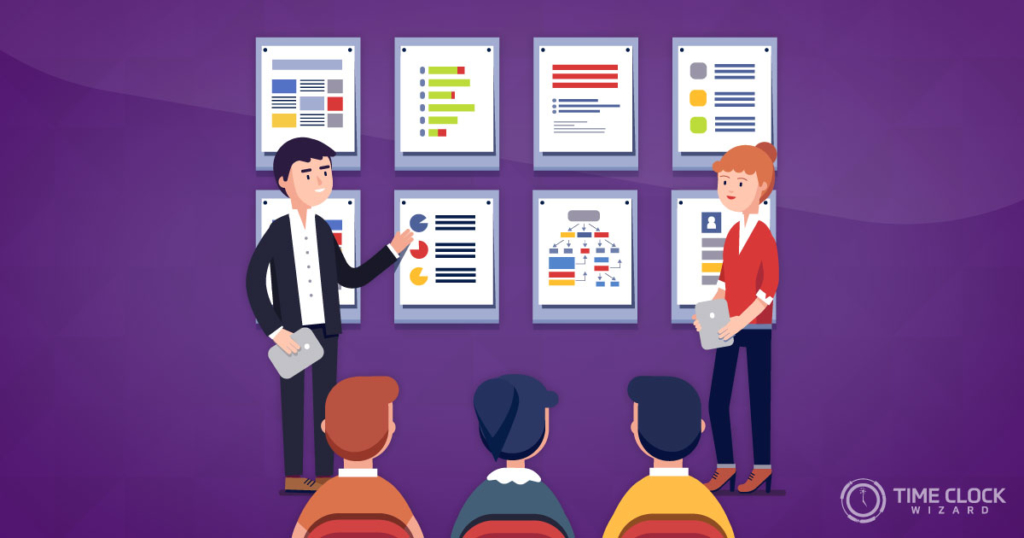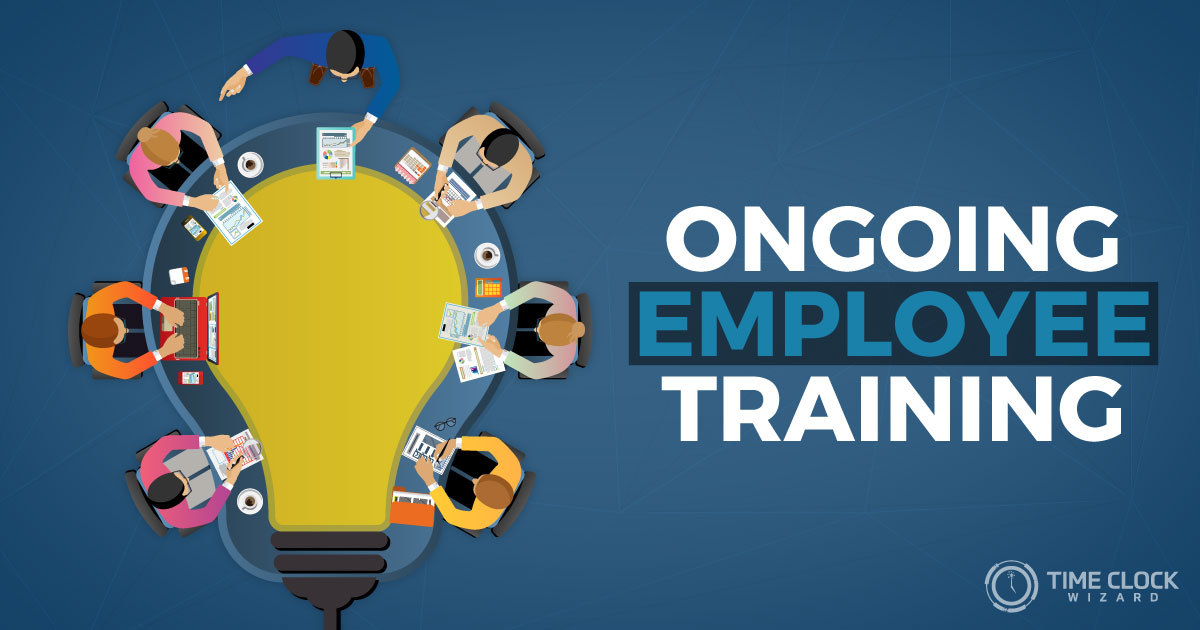
The average business makes a staggering amount of investments to get up and running. Whether you are a manufacturer spending on research & development (R&D), production, and go-to-market planning, or a software company investing in programmers, a sales force and a customer service team—every division of your company has at least one cost center in common: workers. All of those employees, no matter the department, need to know how to perform their jobs in order for the organization to grow and succeed, and you as a business owner or manager need to understand the importance of employee training.
How do you ensure that staff is right for the job? The short answer is employee training—one of those aforementioned investments that qualify as a staggering amount. Fortunately, a cost-benefit analysis reveals that employee training is the cost of doing smart business. Executed correctly, it will pay dividends, helping a company grow and sustain itself by building a talented and efficient workforce and work culture that will not only help retain employees but will also win and retain clients.
Importance Of Employee Training Being Done Right
Training—communicating the essence and skills required to perform a specific task—should begin from the moment an employee is hired. Ideally, even before a new hire shows up to work, a welcoming communication should go out the explains the early stages of his or her employment.
Obviously, this first communication should detail where and when the employee should report to work. Additionally, it should outline what will happen during the first days of work. Aside from being courteous—starting new jobs can be anxiety producing—it also establishes a number of corporate cultural themes, projecting an organization that values its employees and values careful, prepared engagement—the kind of attentiveness that should be extended to all employees and, perhaps more importantly, all clients.
Onboarding a new hire should also be a scripted, choreographed, planned process. On the first day of work, the new employee’s workspace should be ready as soon as he arrives. So should email and phone information. If there’s a company portal, that needs to be introduced Contact information—a who’s who list of intra-company resources—should also be provided.
The entire experience should be efficient—a hallmark of any successful organization. Inculcating efficiency at the earliest stage of engagement is—you got it!—an efficient teaching tactic.
Not that every interaction needs to be executed with a cool military precision. Onboarding requires a human touch. All that paperwork that HR wants new employees to fill out? Help your new recruit prioritize. Not every form needs to be filled out immediately. Don’t forget that communication and inclusion are big factors in achieving employee satisfaction. So introducing a new hire to the team is an absolute requirement.
As for announcing a new hire via a company or group-wide email—that’s not meant embarrass the new the guy or gal—it’s meant to celebrate their arrival while also underscoring a commitment to transparency. If you ever been in a workplace where a new hire appears and isn’t introduced around the office, you know it can create a very uncomfortable atmosphere. The new employee feels invisible. Meanwhile, co-workers start to wonder why they don’t know what is going on and feel they are being left out of the loop.
So as a manager, you want to err on the side of inclusion. Providing a group breakfast or taking the team out to lunch to bond with the new hire are meaningful, inclusive, team-building icebreakers.
Establishing a high level of professionalism, focusing on detail, emphasizing the importance of employee training, and demonstrating a communicative work culture are best practices for onboarding, but collectively they also serve to solidify employee retention. Companies that treat employees in a respectful, communicative manner are like to earn a measure of respect back. Working for an efficient, successful organization also fosters a sense of pride for employees. An allegiance builds. Ideally, a feeling of mutual commitment will take hold between the employee and the manager, leading to years of fruitful collaboration.
Employee Training Sessions Do’s and Don’ts
- Think of the employees you are training as clients. Seeing them in this light should help you remember that respect and kindness are key. Your job is to provide clients with a service, in this case, imparting knowledge, teaching them a skill. Your session should be designed to satisfy your client’s needs.
- Know your students. Having some grasp on your students’ backgrounds before you begin your lesson is key. If you can’t learn about them beforehand, have them introduce themselves to start the class. Ask about their previous work experience, their background with technology and the immediate demands of their current job. Use this information to tailor your class to various skill levels. In other words, teaching advanced functions for data management software doesn’t make a lot of sense if the person you are training has never worked with a database before.
- Define the objective. Every session needs to have a goal. Define what that goal is—”what do I want to communicate and teach today?”— and share it. Discuss the importance of employee training sessions, and your purpose. Employees who are being trained will benefit from your focus and should to be told what they are learning and why they are learning it. State this at the beginning of a session, write it on a whiteboard, distribute it in a handout. The rest of the lesson should be structure to fulfill that goal. Then review it at the end of the lesson. If you don’t feel you’ve accomplished your mission, schedule follow-up sessions.
- Keep it simple. Remember that achieving the goal you established is the primary objective of the lesson. Don’t overwhelm people with too much information. If you reach your goal quickly, then introduce new material, but remember — teaching isn’t a race.
- Consider incentives. While knowledge is its own reward— at least according to English theologian John Henry Newman—rewards may actually inspire some people to embrace new information. That’s why some training sessions—especially ones that may occur after hours or on a weekend or are universally understood to be boring— may offer a completion bonus to trainees. In these instances, offering trainees something as simple as a gift card, or as pricey as concert tickets or dinner voucher can make up for the arduous course.
- Ask for feedback. Finding out what parts of your instruction were effective and what parts were difficult or confusing is valuable information that can help you more effective and efficient. Send a follow-up email to your trainees and ask what worked, what didn’t and why. If you don’t hear back, ask their manager to gather responses for you.
An Ongoing Employee Training Process
Training doesn’t—or at least shouldn’t—stop after an initial session. The importance of employee training never subsides. Employees appreciate developing more skills for a number of reasons. Taking on new challenges is engaging. And being assigned new challenges, when presented the right way, can be extremely flattering. Telling a staffer they are being sent to learn a new skill should be conveyed as a reward and an affirmation of the confidence they have inspired. Finally, increasing skills enhances an employee’s value in the marketplace. So learning a new coding language or project management skill or graphic design program is a great way to increase or maintain an employee’s job satisfaction.
Ongoing training is another retention tool, too. Consulting behemoth, Deloitte, conducted a recent survey of millennials —people between 23 and 39—and found that career development was a major factor for the age group when it came to accepting a new job or remain at the old one. So offering on-going employee training options pays off in other ways. You are improving your staff and providing them with an incentive to stay put.
Lest anyone think retention is an overblown issue, replacing an employee can be very expensive. According to the Society of Human Resources Management, companies spend between 90 and 200 percent of a departing employee’s salary finding, hiring and training a replacement. While that may sound like a surprisingly high percentage, we’ve already noted significant expenses: onboarding, training and retaining all have associated costs. Also, a new, untrained employee may not be as productive as the departed employee, only further emphasizing the importance of employee training.
Keeping Up with Consumers
We now live in the age of the internet, when information travels faster than the speed of sound. A Google search can return valuable, useful information in fractions of a second. This easy access to knowledge—about products, about processes, about techniques, about anything—puts pressure on companies who rely on sales teams, consultants or teachers to interact with consumers.
According to one retail expert, many businesses are concerned about appeasing the too-educated customer. Customers have “already researched the brand, the latest product and all of its features,” says retail analyst Maryam Morse. That is why some retailers say they “need to keep their employees educated to the same level of knowledge.”
Not every business is out on the front lines of retail. But the same paradigm, facing Main Street and the malls, holds true for software developers, engineering firms, chemists and clothing manufacturers. These business segments interact with customers who can self-educate and become instant experts.
This reality makes continuous developmental training necessary, especially in a competitive climate. Try not to view additional training as a problem. Having superb, highly educated employees who can answer questions and provide creative solutions is likely to help bring on new clients. In these instances, well-trained employees become a selling point, providing a wow-factor and positive experience for clients.
And that, of course, was the point all along: focused, detailed training—that costly investment that began with onboarding— is now paying off, just as it was meant to.






